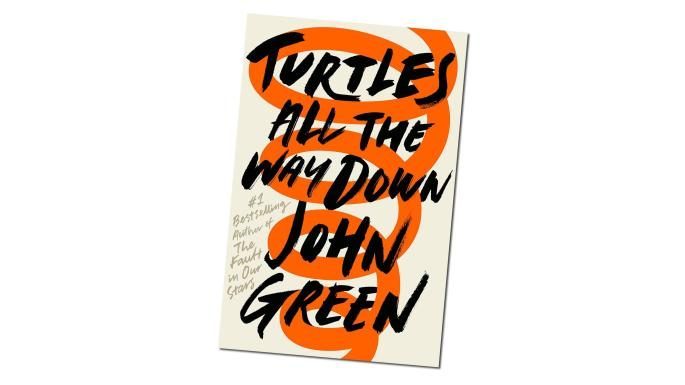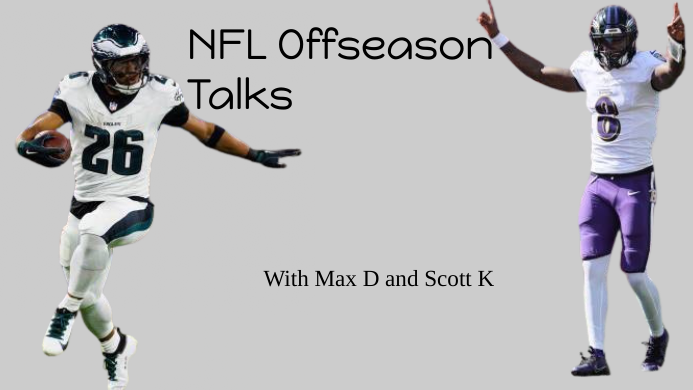Turtles All the Way Down is a literary journey you’ll want to experience
January 22, 2018
*SPOILERS AHEAD*
John Green. I’m sure you’ve heard his name at one point, whether it was written in the shining lights of a cinema, or merely in a passing conversation with a bibliophile friend.
Green is most known for his co-owned YouTube channel VlogBrothers, his speaking out on civil rights and mental health, and, of course, his 7 wildly popular novels. His most popular title is The Fault in Our Stars, which has since been made into a motion picture which took number one in the box office on its opening weekend.
His newest book, Turtles All the Way Down, was well-received upon its release on October 10th, 2017. The characters portrayed in the novel are stories within themselves. Truthfully, it has become one of my favorite books of all time, but for now I’m done selling it to you; let’s get into the details.
The story is narrated by a 16-year-old girl living in Indianapolis. Her name is Aza Holmes, and she has multiple anxiety disorders, which offer an explanation for her constant intrusive thoughts throughout the text. They pester her constantly about trivial things like her fear of the human microbia and deadly diseases, but also about more daunting concerns like the fact that she barely knows who she is, or even if she’s real. These intrusions speak to her almost like they’re another character in the text. Because of this, Aza is fairly introverted. She believes that her breakdowns make her less desirable, whether for friendship or love.
Green has said in one of his VlogBrothers videos that he has heavily based Aza on his own life. In reference to the book, he actually said “This is my first attempt to write directly about the kind of mental illness that has affected my life since childhood, so while the story is fictional, it is also quite personal.” For any avid John Green fans (whether on page or on screen), this novel is an exciting deep-dive into Green’s mind; for people that aren’t as obsessed or experienced with Green, reading the book is still worthwhile because of the imagery and vivid similes present in his writing.
In stark contrast to Aza, however, is her best friend, Daisy. Daisy is bubbly, outgoing, and definitely a bit crazy (in a good way though). Her life motto is “break hearts, not promises.” When she isn’t making sarcastic commentary or babbling on about how much she despises her job at Chuck. E Cheese’s, she’s writing Star Wars fanfiction. Her stories on the budding romance between the two intergalactic warriors, Chewbacca and Rey, have become wildly popular online. Aza later realized the similarities between herself and the fictional character Ayala.
Although the story begins with Aza, Daisy, and a third character Mychal at a school lunch table, it quickly spirals out of control. Daisy tells Aza what she’s heard on the news; Russell Pickett, father of Davis Pickett (Aza’s childhood best friend), lizard enthusiast, and billionaire, has gone missing after rumors of his fraud investigation begin to spread. The reward for information that could lead the police to Pickett’s arrest reels in at $100,000. Though it takes some time, Daisy finally convinces Aza to help her investigate. Her closeness to Davis is a valuable asset.
For those of you who haven’t read the book yet, I suggest you stop here and head to the library. If you have read it, then I suppose this warning was of no use to you; carry on, my fellow bibliophile.
As I was saying, Daisy doesn’t know it yet, but she has just caused a proper mess. The first domino of the series she knocks down when she and Aza cross the White River (Aza lives at one end, Davis at the other), only to be caught by a security guard, which, of course, goes along with their plan because he brings them to Davis. Aza and Davis begin reconnecting after this, and a romance begins to develop. Green hooks the reader with the flirtation between the two.
Davis Pickett grew up in wealth with his parents being rich, but that doesn’t mean that everything is easy for him. Because of this, Davis has had to increase his role as a father figure to his little brother, Noah, when Mr.Pickett goes missing. It’s draining, so Dave uses poetry and astronomy as an escape. At the roots, he is kind-hearted, but definitely has trust issues.
As far as happy endings go, this novel doesn’t provide the most satisfying of them. Not everything works out perfectly. I somewhat believe that it’s actually the most admirable thing about the book. Everything is realistic. John Green isn’t just weaving a story the readers want to hear. He’s writing what might actually happen in real life if this plot were to unfold with real people. It demonstrates what Aza repeats over and over again throughout the novel; life isn’t perfect, but it goes on, for better or for worse.
Aza herself makes commentary on an ending as such on page 276 of the novel; “The problem with happy endings is that they’re either not really happy, or not really endings, you know? In real life, some things get better and some things get worse,” she said. The effect that the realism has on the book is self-explanatory, in fact; it just makes everything seem more real– more believable.
Those of you who have seen The Umbrellas of Cherbourg will know what I’m talking about when I say that this ending evokes the similar feeling of contradicting, and almost paradoxical emotions of being satisfied, yet not at the same time when Geneviève sees Guy working the gas station. Everything turned out okay, but not in the way that you would have wanted it to. For those of you who didn’t see the movie that I described, you should definitely go watch it. Like right now… But, I’m not reviewing The Umbrellas of Cherbourg, am I?
The book is chock full of metaphors and philosophical inquiries; even the title is in reference to a paradox. ¨Turtles all the way down¨ refers to the mythological belief that the Earth is on the back of a turtle, which is on the back of a larger turtle, which is on the back of a larger turtle, and so on, and so forth. The expression, which dates back to the early 18th Century, refers to epistemology, the branch of philosophy concerned with the theory of knowledge.
By my interpretation, I think this title intends to reference Aza’s personality and experiences. In Chapter 12, the character herself makes a reference to the theory. ¨And when I look for the, like, Real Me, I never find it. It’s like those nesting dolls, you know?… you keep opening hollow dolls until eventually you get to the smallest one and it’s solid all the way through. But with me, I don’t think these is one that’s solid. They just keep getting smaller.¨ The dolls go infinitely, just like the turtles. The only difference between the two is that Aza describes how she has a lack of knowledge because of this, but the turtles represent all of the world’s knowledge, infinitely contained.
It is also a commendable achievement that the book was able to bring to light the topic of mental disabilities in a respectable way. Some authors have been criticized for the glorification and/or demonization of people with mental disorders. Green, living with OCD and anxiety himself, was able to give an insider’s view of what living with one is actually like, and spread awareness amongst readers in a creative way.
Turtles All the Way Down kept me captivated from cover to cover, and it took me less than a week to finish. Through it’s clever wordplay, heart-wrenching dialogues, and provocative messages, I would say that this book made itself a beyond worthwhile read, and an excellent addition to anybody’s library: young, old, or in between. Soon enough, it can be part of your movie collection too. In December 2017, Green announced that he would be teaming up with Fox once again to bring the book to the big screen. If it’s anything like the rest of Green’s movies, this should be a box office hit. Needless to say, I’ll be waiting on the edge of my seat.
Turtles All the Way Down is available for checkout at the LHS Library, but can also be found on Amazon for $10.99 (Kindle), $11.97 (Hardcover), or $18.71 (Audio CD)






